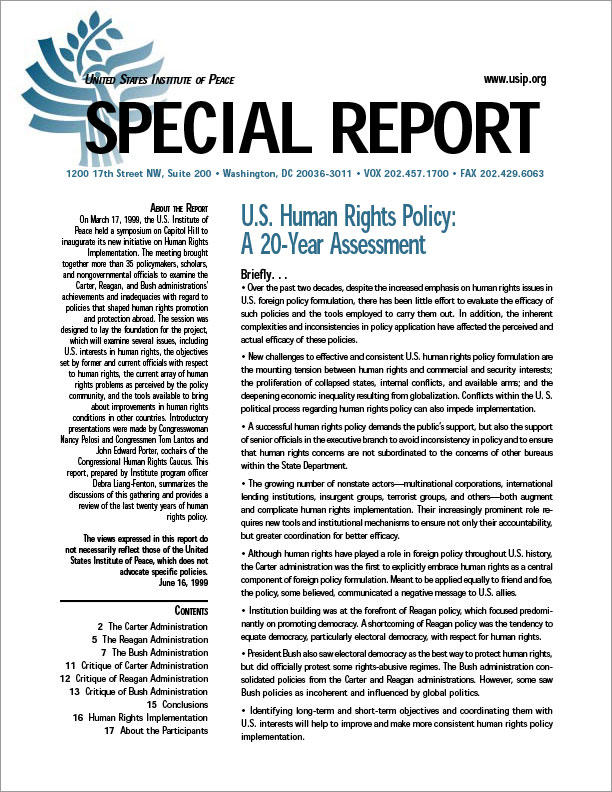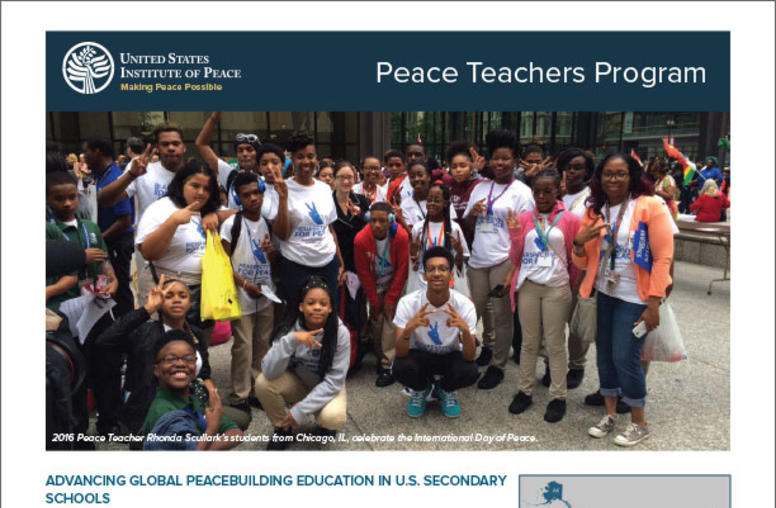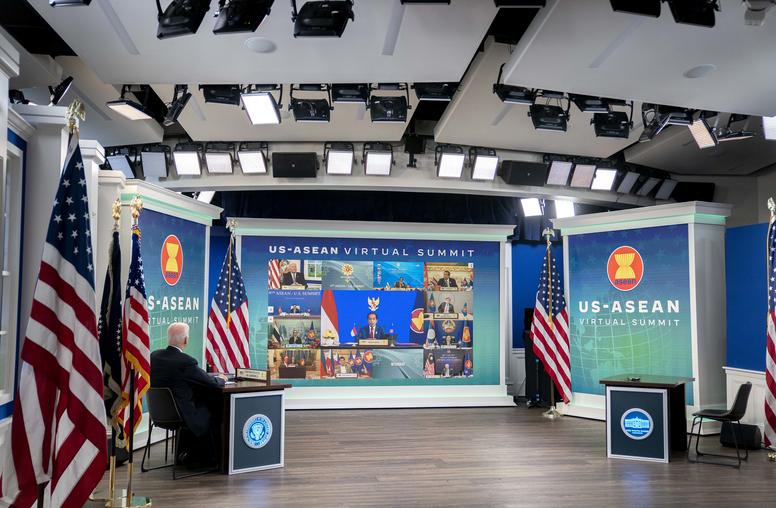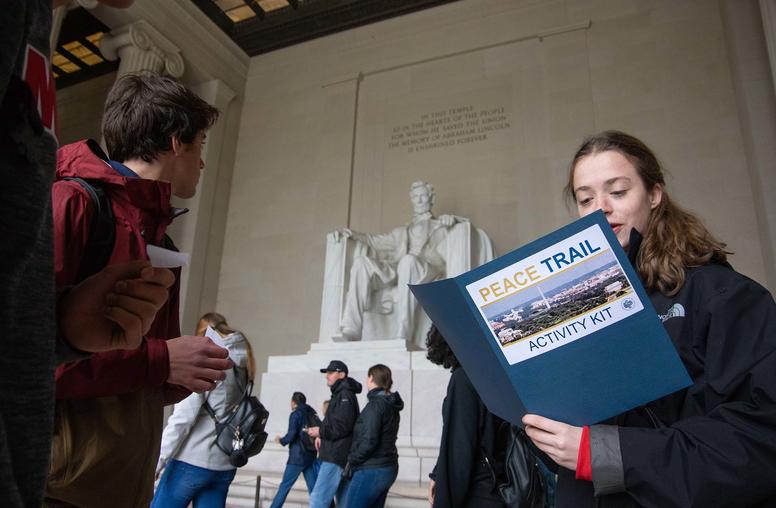U.S. Human Rights Policy: A 20-Year Assessment

Summary
- Over the past two decades, despite the increased emphasis on human rights issues in U.S. foreign policy formulation, there has been little effort to evaluate the efficacy of such policies and the tools employed to carry them out. In addition, the inherent complexities and inconsistencies in policy application have affected the perceived and actual efficacy of these policies.
- New challenges to effective and consistent U.S. human rights policy formulation are the mounting tension between human rights and commercial and security interests; the proliferation of collapsed states, internal conflicts, and available arms; and the deepening economic inequality resulting from globalization. Conflicts within the U. S. political process regarding human rights policy can also impede implementation.
- A successful human rights policy demands the public's support, but also the support of senior officials in the executive branch to avoid inconsistency in policy and to ensure that human rights concerns are not subordinated to the concerns of other bureaus within the State Department.
- The growing number of nonstate actors, multinational corporations, international lending institutions, insurgent groups, terrorist groups, and others both augment and complicate human rights implementation. Their increasingly prominent role requires new tools and institutional mechanisms to ensure not only their accountability, but greater coordination for better efficacy.
- Although human rights have played a role in foreign policy throughout U.S. history, the Carter administration was the first to explicitly embrace human rights as a central component of foreign policy formulation. Meant to be applied equally to friend and foe, the policy, some believed, communicated a negative message to U.S. allies.
- Institution building was at the forefront of Reagan policy, which focused predominantly on promoting democracy. A shortcoming of Reagan policy was the tendency to equate democracy, particularly electoral democracy, with respect for human rights.
- President Bush also saw electoral democracy as the best way to protect human rights, but did officially protest some rights-abusive regimes. The Bush administration consolidated policies from the Carter and Reagan administrations. However, some saw Bush policies as incoherent and influenced by global politics.
- Identifying long-term and short-term objectives and coordinating them with U.S. interests will help to improve and make more consistent human rights policy implementation.
About the Report
On March 17, 1999, the U.S. Institute of Peace held a symposium on Capitol Hill to inaugurate its new initiative on Human Rights Implementation. The meeting brought together more than 35 policymakers, scholars, and nongovernmental officials to examine the Carter, Reagan, and Bush administrations' achievements and inadequacies with regard to policies that shaped human rights promotion and protection abroad. The session was designed to lay the foundation for the project, which will examine several issues, including U.S. interests in human rights, the objectives set by former and current officials with respect to human rights, the current array of human rights problems as perceived by the policy community, and the tools available to bring about improvements in human rights conditions in other countries. Introductory presentations were made by Congresswoman Nancy Pelosi and Congressmen Tom Lantos and John Edward Porter, co-chairs of the Congressional Human Rights Caucus. This report, prepared by Institute program officer Debra Liang-Fenton, summarizes the discussions of this gathering and provides a review of the last twenty years of human rights policy.
The views expressed in this report do not necessarily reflect those of the United States Institute of Peace, which does not advocate specific policies.



